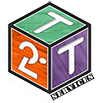Social Communication
Social communication refers to the emergence of verbal and nonverbal skills, social interaction, and social cognition. It is often viewed as a form of communication that is ‘unwritten’ and that people seem to ‘just know.’ Communication in this area includes interaction with peers, family members, providers, and educators. Social communication behaviors include understanding and using appropriate facial expressions, eye contact, and body language.
Children who exhibit difficulties with social communication skills may:
• Have difficulty sharing attention and orienting to others
• Have poor turn-taking in play and conversation
• Respond inappropriately to questions
• Have difficulty maintaining topic of conversation
• Have difficulty comprehending nonverbal cues including facial expressions and/or body language
• Have difficulty attending to speaker with appropriate eye contact
• Uses ‘false starts’ or interrupt others
• Revises speech or repeats the same thoughts
• Difficulty responding to proximity (child may get too close to someone)
• Difficulty connecting emotional states of self to others
Augmentative & Alternative Communication
Augmentative and alternative communication (AAC) refers to the communication methods used to supplement or replace speech or writing for those with impairments in the production or comprehension of spoken or written language. AAC can be a permanent addition to a person’s communication or a temporary aid. Children and adults with more severe speech or language problems may need to find other ways to communicate. There are many types of AAC that they can use.
The first “A” in AAC stands for Augmentative Communication. When you augment something, you add to it or supplement. Augmentative communication is when you add something to your speech (eg. sign language, pictures, a letter board). This can make your message clearer to your listener.
The second “A” in AAC stands for Alternative Communication. This is when you are not able to speak. It is also when your speech is not understood by others. In this case, you need a different way to communicate.
Basically, AAC can be tools, systems, devices or strategies. These tools help a person communicate, when they cannot rely on speech. Perhaps your child has not started talking. Perhaps you have lost your ability to speak. Perhaps your speech comes and goes. Maybe speaking is harder than other ways to communicate. AAC can help.
Time 2 Talk Therapy specializes in the Evaluation, trial period, and funding process to obtain AAC devices for our clients. Furthermore, Time 2 Talk Therapy offers specialized treatment programs for our clients and families based on their individual needs for implementing AAC at home, at school, and in the community.
 Time 2 Talk Therapy Services
Time 2 Talk Therapy Services